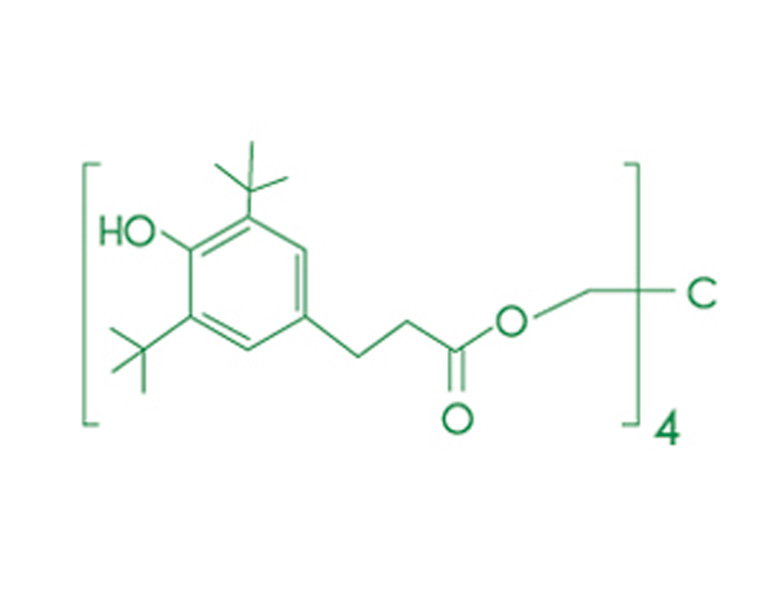
Antioxidant 1010
Chemical Name : pentaerythritol tetrakis[3-[3,5-di-tert-butyl-4-hydroxyphenyl]propionate
CAS No. 6683-19-8
It is a sterically hindered phenolic primary antioxidant. It is odorless and tasteless. It is highly effective, non-discoloring stabilizer. It has good compatibility, high resistance to extraction and low volatility. AO1010 is compatible with polyolefins, such as polyethylene, polypropylene, polybutene and olefin copolymers such as polyacetals, polyamides and polyurethanes, polyesters, PVC, styrene homo-and copolymers, ABS, synthetic rubber, elastomers such as butyl rubber (IIR), SBS, SEBS, EPM and EPDM. Used in synthetic fibers. The FDA has approved this material for food packaging.

Antioxidant 168
Chemical Name : tris(2,4-di-tert.-butylphenyl)phosphite)
CAS No. 31570-04-4
it is a hydrolytically stable phosphite processing stabilizer. Also acts as an antioxidant. It has low volatility and is particularly resistant to hydrolysis. Provides storage stability and give the polymer long term protection against thermo-oxidative degradation. It protects polymers which are prone to oxidation, during the processing steps (compounding/pelletizing and recycling) from molecular weight change (by chain scission or crosslinking) and prevents discoloration. is compatible with polyesters, styrene homo- and copolymers, polyolefins, olefin-copolymers such as (HDPE, LLDPE), polypropylene, polybutene and ethylenevinylacetate copolymers as well as polycarbonates, polyamides and elastomers such as BR, SEBS, SBS, and other organic substrates.
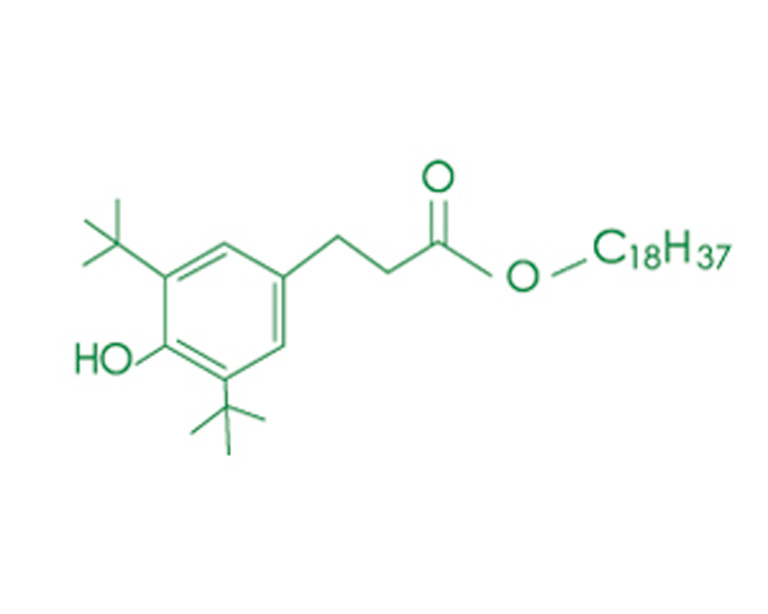
Antioxidant 1076
Chemical Name: Octadecyl-3-[3,5-di-tert-butyl-4-hydroxyphenyl]propionate]
CAS No. 2082-79-3
It is a highly efficient sterically hindered phenolic primary antioxidant. Provides processing and long-term thermal stabilization. It is odorless, stable to light and has excellent color retention. It protects the substrates against thermo-oxidative degradation. It has low volatility and high resistance to extraction. AO 1076 is compatible with polyolefin such as polyethylene, polypropylene, polybutene-1 as well as in engineering plastics, styrene homo- and copolymers polyurethanes and elastomers. Its recommended dosage rate is 0.05-0.2% for long-term thermal stability, in polyolefin is 0.1-0.4% and for styrene homo- and copolymers is 0.1-0.3%.
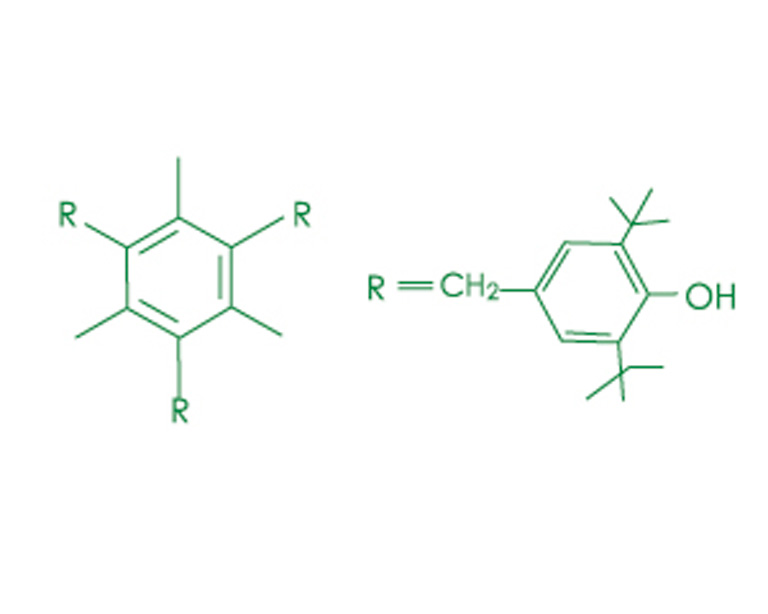
Antioxidant 1330
Chemical Name: 3,3′,3′,5,5′,5′-hexa-tert-butyl-a,a’,a’-(mesitylene-2,4,6-triyl)tri-p-cresol)
CAS No. 1709-70-2
It is a sterically hindered phenolic primary antioxidant for processing and long-term thermal stabilization. It has good compatibility with most substrates, high resistance to extraction and also offers excellent dielectrical properties it protects the substrates against thermo-oxidative degradation. It reduces water carry-over in polypropylene tape extrusion. It is compatible with polyethylene, polypropylene, polybutene, linear polyesters, polyamides, PVC, polyurethane, styrene homo- and copolymers. Used for the stabilization of pipes, molded articles, wires and cables, elastomers, dielectric films etc. It is particularly recommended for polyolefin applications requiring good water extraction resistance combined with low color development. Its recommended dosage rate in polyolefin is 0.05-0.3%.
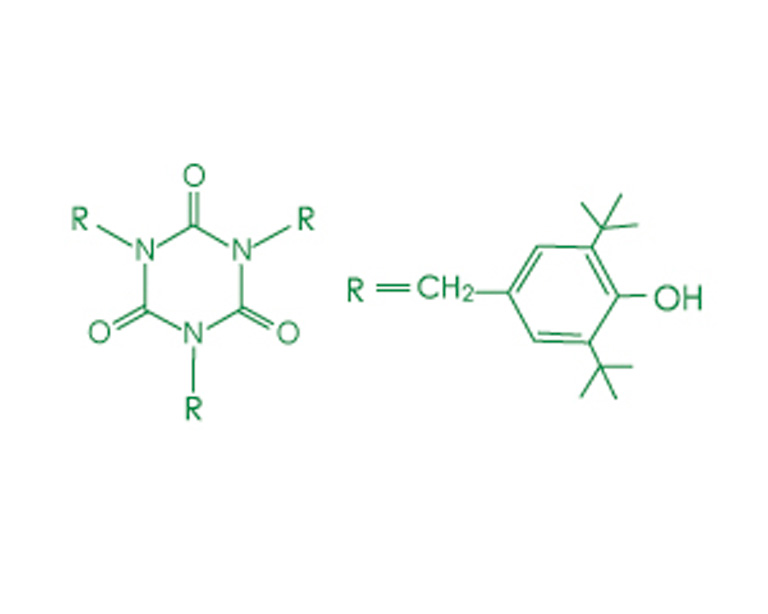
Antioxidant 3114
Chemical Name: 1,3,5-tris(3,5-di-tert-butyl-4-hydroxybenzyl)-1,3,5-triazine-2,4,6(1H,3H,5H)-trione
CAS No. 27676-62-6
It is a sterically hindered phenolic antioxidant for processing and long-term thermal stabilization. It is a highly effective, non-discoloring stabilizer and has low volatility and high resistance to extraction. It is odorless and stable to light. It protects the substrates against thermo-oxidative degradation. It is compatible with polyethylene, polypropylene, polybutene, linear polyestser, PVC, polyamides, polyurethanes, styrene homo- and copolymers, elastomers such as SBS, EPR, EPDM and other synthetic rubbers. Used in organic substrates such as polymers, synthetic fibers and elastomers. Its recommended addition level is 0.05-0.3%.

Antioxidant 1024
Chemical Name: 2′,3-bis [[3-[3,5-di-tert-butyl-4-hydroxyphenyl]propionyl]]propionohydrazide
CAS No. 32687-78-8
is a metal deactivator and primary (phenolic) antioxidant. Provides unmatched extraction resistance and processing stabilization. Used for wire and cable resins, filled polyolefins and NBR fuel hoses. is also used in X-SBR, SBR, styrene homo-and copolymers. Its recommended dosage rate is 0.1-0.2%.

Antioxidant B225
Chemical Name: Blend of tris(2,4-ditert-butylphenyl)phosphite and pentaerythritol tetrakis[3-[3,5-di-tert-butyl-4-hydroxyphenyl]propionate]
It is a synergistic processing and long-term thermal stabilizer system. It is a blend of AO 168 and AO 1010. Maintains original melt flow and offers low color formation. Provides long-term-thermal stability. AO 168, an organic phosphite of low volatility and particularly resistant to hydrolysis, protects the polymers which are prone to oxidation. AO 1010, a hindered phenolic antioxidant, contributes synergistically to polymer stabilization during processing and provides long-term thermal stability by preventing thermo-oxidative degradation. AO B225 is compatible with polyolefin and olefin-copolymers such as polyethylene, polypropylene, polybutene and ethylene-vinyl acetate copolymers, engineering plastics, styrene homo- and copolymers, polyurethanes. Its recommended dosage rate in polyolefin is 0.1-0.25%.

Antioxidant B215
AO B215 is a synergistic processing and long-term thermal stabilizer system. It is a blend of AO 168 and AO 1010. Maintains original melt flow and offers low color formation. Provides long-term-thermal stability. AO 168, an organic phosphite of low volatility and particularly resistant to hydrolysis, protects the polymers which are prone to oxidation. AO 1010, a hindered phenolic antioxidant, contributes synergistically to polymer stabilization during processing and provides long-term thermal stability by preventing thermo-oxidative degradation. AO B 215 is compatible with polyolefin and olefin-copolymers such as polyethylene, polypropylene, polybutene and ethylene-vinyl acetate copolymers, engineering plastics, styrene homo- and copolymers, polyurethanes and elastomers. Its recommended dosage rate in polyolefin is 0.1-0.25%.
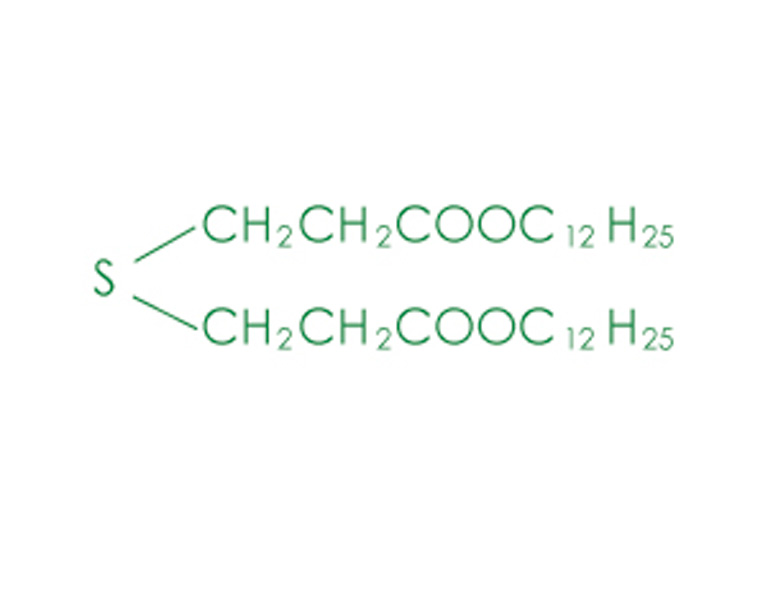
Antioxidant DLTDP
Chemical Name: Didodecyl 3,3-thiodipropionate
CAS No. 123-2834
Decomposes and neutralizes hydroperoxides, formed by auto-oxidation of polymers. Acts as a synergist in combination with phenolic antioxidants. Has been approved for use in some food packaging applications.
